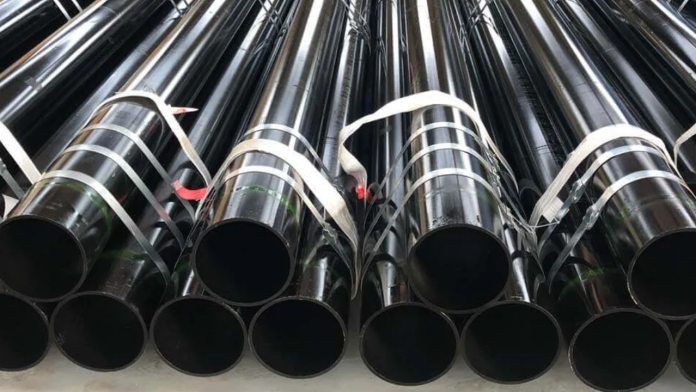ASTM A500 is a critical fashionable specification advanced via the Yankee Society for Testing and Substances (ASTM) that addresses the necessities for welded and seamless, cold-shaped carbon steel structural tubing in diverse shapes, consisting of round, rectangular, and rectangular. This specification is especially widespread within the creation enterprise, where the need for high-power yet lightweight substances is paramount for the structural integrity of homes and bridges.
The ASTM A500 widely outlines four grades of metal, allowing for flexibility in material selection based totally on particular venture necessities. The maximum usually applied grade, ASTM A500 Grade B, boasts a minimal yield power of 42,000 psi, making it ideal for an extensive range of creation applications.
Meanwhile, Grade C offers superior energy with a minimal elastic restriction of 46,000 psi, and Grade D necessitates a heat remedy for extra sturdiness. Adhering to astm a500 standards ensures that construction initiatives utilize dependable, terrific substances that meet overall performance and protection necessities, ultimately contributing to the sturdiness and safety of the systems built.
Testing Methods for ASTM A500 Materials
This article explores these testing methods, along with visual inspection, mechanical testing, chemical evaluation, and non-adverse testing, all of which play vital roles in confirming the fine and overall performance of the substances.
Visual Inspection
Visual inspection is the preliminary step in comparing ASTM A500 materials. In the course of this process, inspectors observe the metallic tubing for any visible defects, which include cracks, weld discontinuities, and floor irregularities. This noninvasive approach facilitates detecting apparent troubles that could compromise structural integrity. Right lighting fixtures and magnification equipment can be used to enhance visibility. Even as visual inspection can’t hit upon subsurface flaws, it’s far more critical to ensure the general first-rate look of the material earlier than further testing.
Mechanical Testing
Mechanical testing is essential for testing the physical residences of ASTM A500 substances. This consists of a tensile test, which measures yield electricity, remaining tensile power, and elongation. The samples are subjected to managed strain till failure, imparting treasured statistics approximately the cloth’s behavior beneath a load. Other mechanical assessments consist of hardness tests, which verify the material’s resistance to deformation, and effect checks, which examine its toughness at diverse temperatures.
Non Destructive Testing
Nondestructive testing strategies are critical for testing inner and outside defects without adversely affecting the material. Techniques including ultrasonic testing, radiographic testing, and magnetic particle testing are commonly used for ASTM A500 substances. UT makes use of high-frequency sound waves to come across flaws in the metal, even as RT employs X-rays or gamma rays to create photos of the inner structure. MPT detects surface discontinuities in ferromagnetic substances, supplying a comprehensive understanding of the fabric’s integrity.
Ultrasonic Testing
Ultrasonic testing is a broadly used NDT method for ASTM A500 materials. In UT, high-frequency sound waves are transmitted into the metal, and any reflected waves are analyzed to pick out inner flaws. This technique can stumble on voids, cracks, and inclusions that won’t be visible via visual inspection. UT is extraordinarily sensitive and can provide particular records about the cloth’s thickness, taking into consideration the evaluation of wall integrity in the tubing. It’s far a powerful technique for making sure compliance with ASTM requirements.
Bend Testing
Bend testing is every other crucial mechanical check for ASTM A500 substances, assessing their ductility and resistance to cracking. In this test, a pattern of the tubing is bent at a precise radius to evaluate the way it behaves beneath pressure. A bend displays the material’s capacity to withstand deformation without failure, which is vital for applications requiring structural integrity. This testing method makes certain that the substances can take care of the needs of creation and remain reliable over time.
Impact Testing
Impact testing evaluates the longevity of ASTM A500 materials, particularly in low-temperature environments. This test determines the strength absorbed by way of the cloth during fracture and enables one to become aware of its capability to resist surprising effects or loads. The Charpy impact check is commonly used, in which a notched pattern is struck with the aid of a swinging pendulum. The amount of strength absorbed by the sample before breaking is measured, presenting a perception of its ductility and suitability for construction applications wherein effect resistance is critical.
Remarks
Numerous testing strategies are hired to make sure that ASTM A500 substances meet the specified standards. From visible inspection to mechanical testing, chemical evaluation, and non-adverse testing, every approach performs a crucial function in confirming the pleasant and overall performance of those substances. By adhering to those testing protocols, producers can make sure that their ASTM A500 merchandise is dependable, secure, and appropriate to be used in important production initiatives, in the end contributing to the structural integrity and durability of buildings and bridges.











